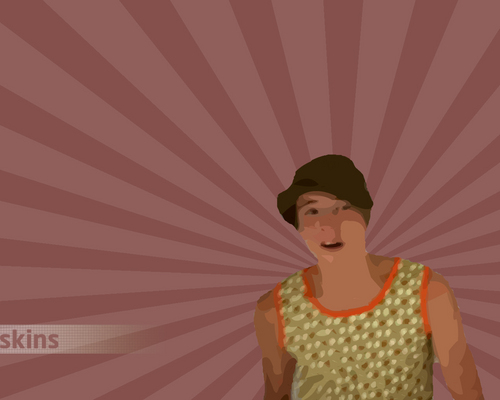
It became clear that something other than Forward Kinematics was needed to realistically animate a character.
#Animate it skins movie#
In the feature film world, constantly readjusting a dinosaur’s toes to compensate for even slight movements in the ankle, knees, thighs and hips above them led to slips and slides on the movie screen, which measured in feet rather than in pixels. Luckily, today game animators are able to use many of the same animation techniques once reserved only for feature film. The Advent of Computer-generated Skeletons using Inverse Kinematics Keep the feet planted and the result can be painful. The difficulty with basic hierarchies and Forward Kinematics is when you turn the entire hierarchy, the feet slide.

The illusion of stability actually takes constant readjustment. Planting a walking character’s foot is almost impossible, because the single most difficult thing for an object at the bottom of a hierarchy to do is to stay in one place while the objects above it move.
Rotate only the top of the hierarchy (the hip) leaving the other pieces behind (very painful to watch).Īt that point, Forward Kinematics (and your character) falls apart. Rotate the entire hierarchy (making the feet slide uselessly). In those cases, you have two choices, neither of which is aesthetically pleasing: This “top-down” system of rotation is called Forward Kinematics, and it’s great for basic animation.Īnimation seems simple with Forward Kinematics and basic hierarchies-until your character has to do something like walk without her feet sliding across the floor, or stay in place while turning her body to look behind her. If you want to move a character’s hand under a basic hierarchy, you would first rotate the upper arm, then the forearm, and finally the hand itself until the entire limb is in place. Basic lower body setup and hierarchy for Forward KinematicsĪnother school of thought on hierarchies uses the “inverted tree” model, where the parent (the hip or pelvis) is referred to as the “root.” While no part of a hierarchy is ever really referred to as the “trunk,” the children, and their children, become “branches.” ( See Figure 1.) The Trouble with Forward Kinematics The right upper leg would share a sibling relationship with the left, and both would be children of the hips. The process for assigning one object as the parent or child of another is often called “parenting” and sometimes “grouping.” In the case of a human leg, the parent of the upper leg would be the hip, the lower leg would be a child of the upper leg, and the foot would be the child of the lower leg. A hierarchy is a parent-child-sibling relationship. Outside of straight target-to-target morphing, animators almost always use hierarchies of one sort or another to animate their characters. To understand Inverse Kinematics, it’s important to understand basic hierarchies and Forward Kinematics. Advanced processing performance enabled animators to use computer-generated skeletons not only to hold segmented characters together, but to actually deform the skins of those characters. Then PCs became faster and smarter, which allowed game engines to grow faster and smarter too. Advanced Processor Performance Enables Computer-generated Skeletons Animated with Inverse Kinematicsįor a while, game developers suffered in silence. Without the processing power available today to handle real-time surface deformations, games featured a lot of robots and armor. 
Forget realistically bending an elbow or flexing a muscle-it just wasn’t going to happen. The best animators could hope for was a platform that could handle basic hierarchies, allowing them to position and keyframe all those segments at once. Not long ago, game characters were a lot like shellfish: they were basically piles of rock-hard segments.

When you’re done reading, hopefully you’ll feel energized enough to leap over any current roadblocks.

Along the way, it may answer some of your burning questions. This paper introduces some basic and intermediate principles for using skeletons with both Inverse Kinematics and a top-down rotation system to move animated characters called Forward Kinematics. Some of them you’ll love, some you may not…at least not at first. Great! But if you’ve never used a skeleton before, or even applied IK to a jointed model, you’re in for some surprises. Your gaming engine supports skeletons, an animation system called Inverse Kinematics (IK), and complex hierarchical setups for control. So you’ve built your Gothic castle-it’s time for your hero to dash into play and defend the battlements. Get more game dev news and related topics from Intel on VentureBeat. The original article is published by Intel Game Dev on VentureBeat*: Character Animation: Skeletons and Inverse Kinematics.








 0 kommentar(er)
0 kommentar(er)
